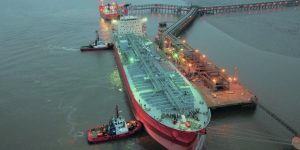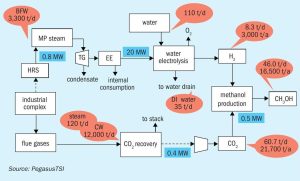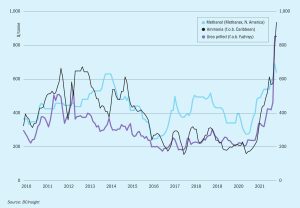
Market Outlook
Yara and Mosaic shocked markets with a settlement of $1,625/t c.fr for April, up $490/t on March, and the highest ever price recorded at Tampa, as the removal of Russian and Ukrainian ammonia supply impacted global prices, and Baltic rates soared to $1,500/t. However, April saw some of the global dislocations caused by the Russian conflict begin to ease, while the high prices saw buyers in the US delay purchases, leading to the Tampa price falling back $200/t for May loadings.








